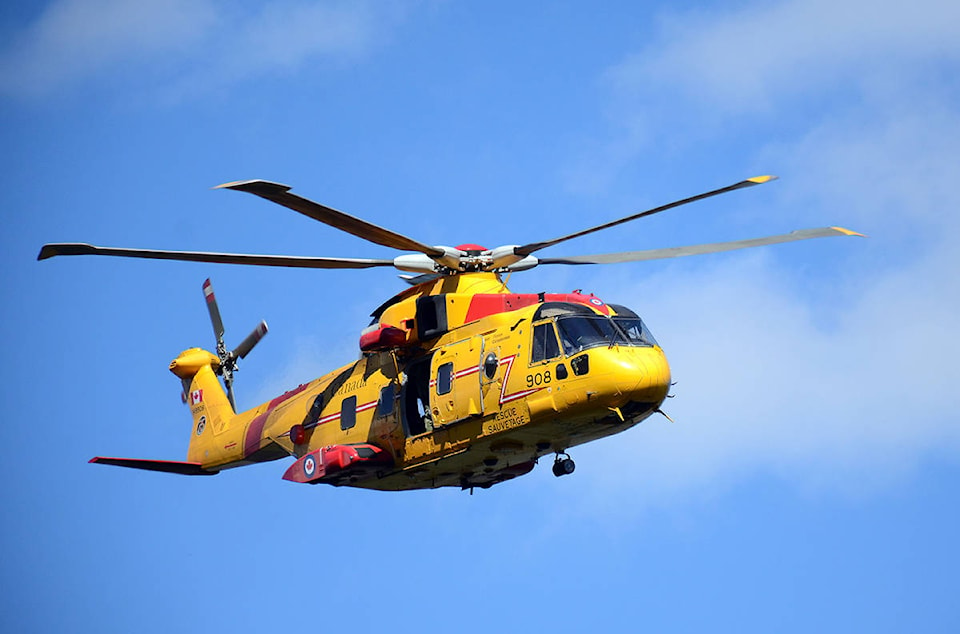Don’t be alarmed if you see military aircraft filling local skies early next week.
Canadian Armed Forces will be conducting a search and rescue exercise around Tofino from Sunday, Feb. 25 until Thursday, March 1.
The training scenarios are designed to be realistic and will include responses by multiple agencies including the RCMP, the Canadian Coast Guard, Parks Canada, BC Parks, the Civil Air Search and Rescue Association, the United States Coast Guard, and the Tofino Airport Authority.
“There’s a lot of people on the West Coast who are involved in search and rescue and this is an opportunity for us to bring everyone together to work together so that we’re that much more effective during an actual rescue,” a spokesperson for the Canadian Air Force’s 19 Wing Comox told the Westerly News.
The exercises will bring a noticeable increase in aircraft with the most common being a CH-149 Cormorant helicopter and a fixed-wing CC-115 Buffalo, both recognizable by their distinctive yellow paint schemes.
A CC-130H Hercules and several privately owned aircraft may also be involved in the exercise.
Most exercise activity will take place away from communities and park attractions to avoid causing disruption or alarm to residents and visitors.
“By design, the exercise is meant to have as little impact as possible in the area,” the spokesperson said. “We also don’t want to ruin the experience for some people of being on a beach, listening to waves and feeling the wind in their face.”
Anyone who comes upon an exercise is welcome to watch it unfold, however must stay at least 100 metres away from the activity going on. Boaters must try to stay at least 400 metres away from any water-based training scenarios taking place.
The spokesperson said one of the exercises taking place will be a scenario where a vessel is taking on water so an aircraft will fly over and drop a pump and the scenario will develop from there.
Another exercise will involve a stranded surfer who has washed up in a remote beach area where rescuers will parachute in and extract the surfer by either aircraft or vessel.
“We do a lot of rescues off the West Coast and so the value in us having SAREX [search and rescue exercise] in Tofino is that we’re able to work with other agencies in the area who also are first responders,” the spokesperson said. “It’s useful for them because they see how we operate and it’s useful for us because we see how they operate. Then, if we have to respond on an actual rescue, we already have some familiarity and we’re able to respond better.”
